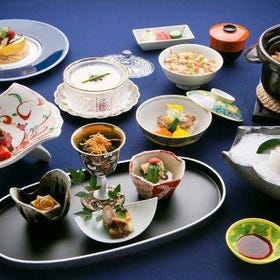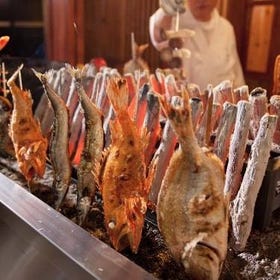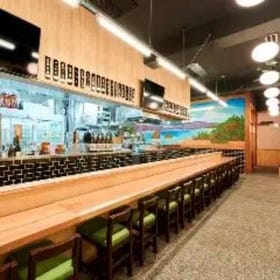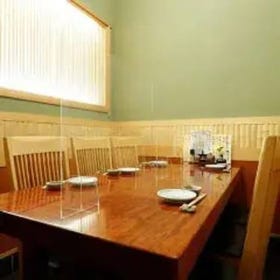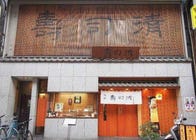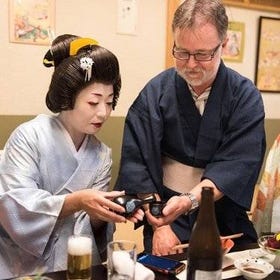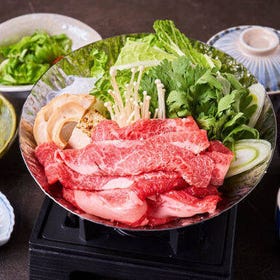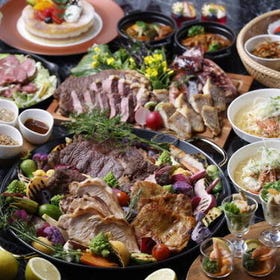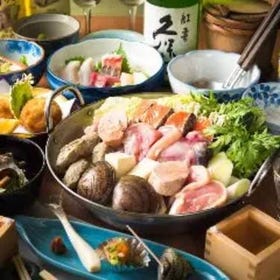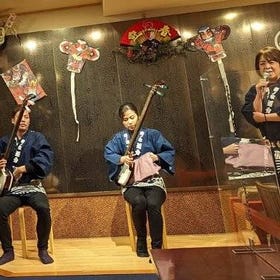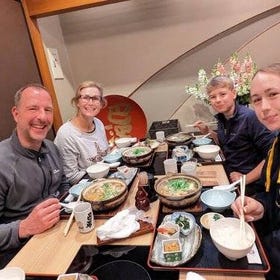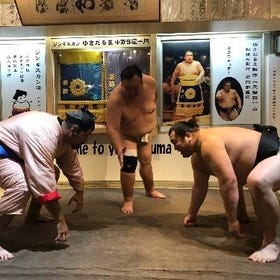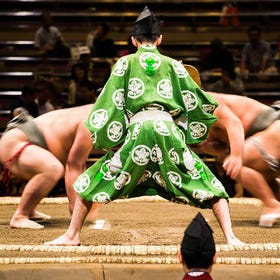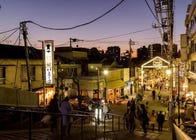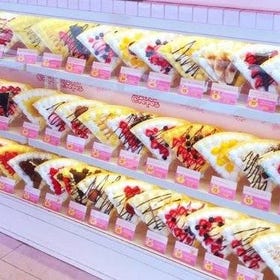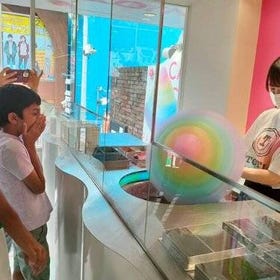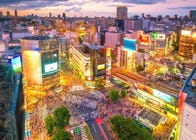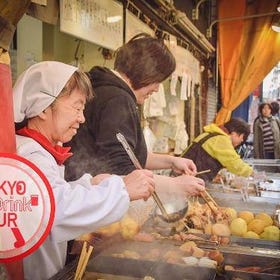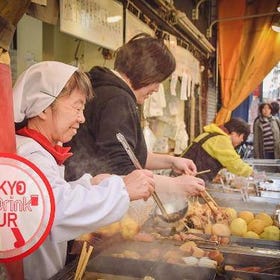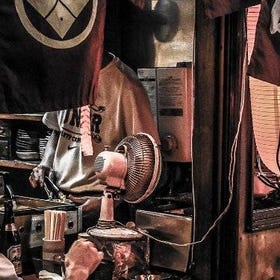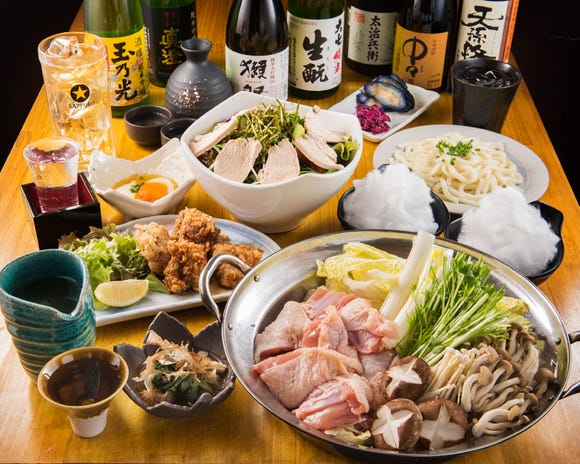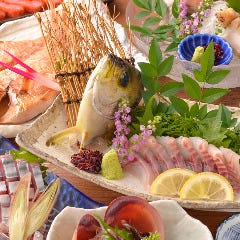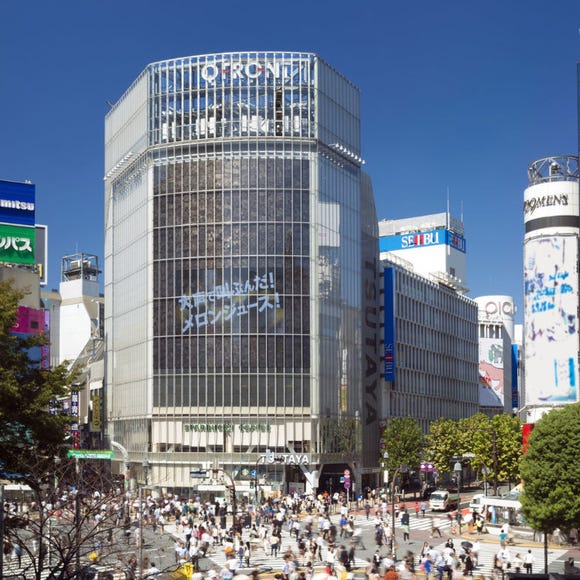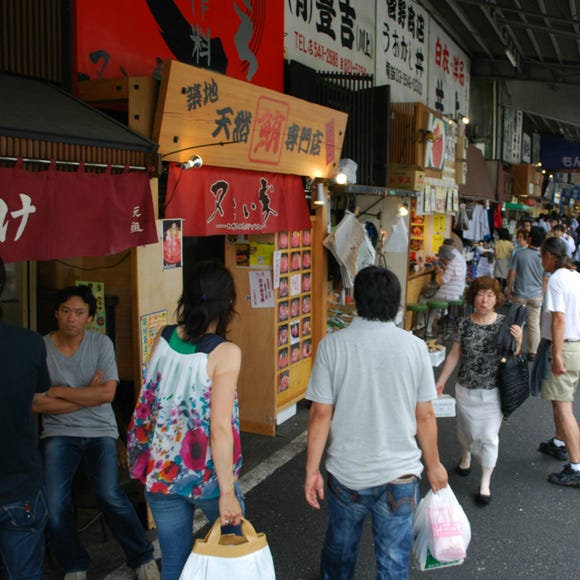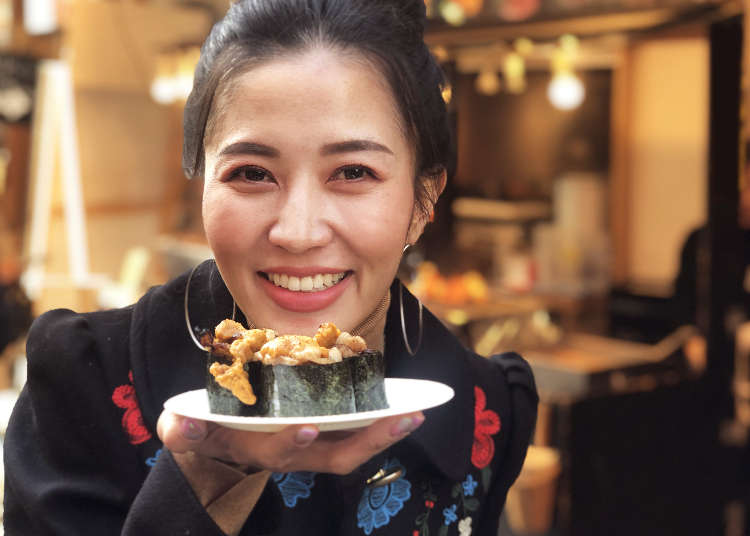
Why is Tokyo often hailed as the world's culinary capital? The answer is deeply rooted in history, with a touch of nature's influence.
Tokyo, formerly known as Edo, is renowned for its Four Foods of Edo: soba, tempura, sushi, and unagi, dishes that are now emblematic of the city's rich flavors. From its early days, Edo/Tokyo has been a culinary melting pot, blending Japanese traditional dishes with influences from China, Korea, Europe, and beyond.
Here, food historian David Conklin shares about the roots of Tokyo's cuisine, and specific neighborhoods where you can enjoy modern fare: like Ginza for high-end fine dining, Tsukishima for monjayaki, Nihonbashi for townspeople's cuisine, including soba and sushi, Kagurazaka for French and upscale fare, and Asakusa for unique treats like sushi, fugu, and unagi.
Get ready to taste the authentic essence of Japan, right here in Tokyo!
Main image: PIXTA
Tokyo: A foodie's dream destination
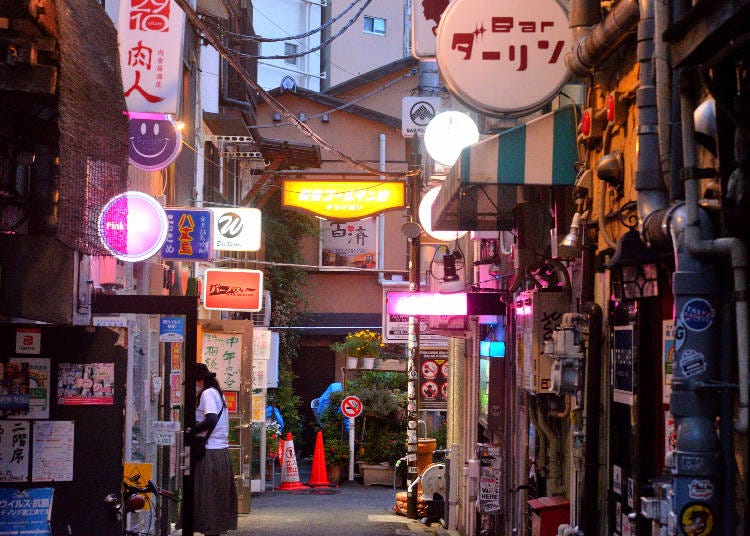
A strong argument can easily be made that Tokyo is the best city in the world for dining. While the vast majority of the city’s 160,000 restaurants serve Japanese food, every other well-known cuisine from around the world can be found. However, some (Middle Eastern, African, Greek, Central, and South American) can be harder to find.
But of the world’s more famous and popular cuisines, especially French, Chinese, and Italian, not only are there many restaurants serving these genres throughout the city, but many that have earned stars in the Michelin Guide, generally an indication of high quality.
Tokyo is, in essence, the epitome of a melting pot of foods and cuisines. Not just foreign foods but also regional specialties from the far corners of Japan. Of all the different foods available in Tokyo, four are closely identified with the city, the “Four Foods of Edo,” namely soba, unagi, tempura, and Edomae sushi.
How Tokyo's iconic cuisine developed and expanded
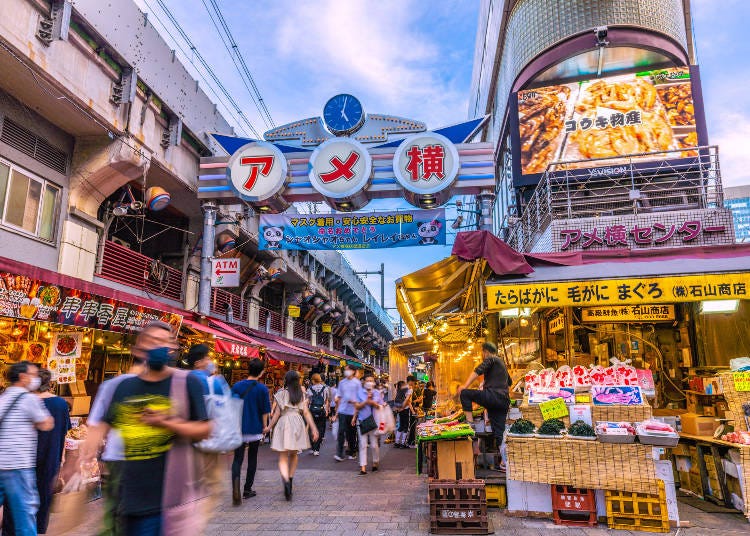
Historically, Japan has been a country where the diet was mostly very localized, especially in mountainous regions. As the renowned Japanese food historian Harada Nobuo once explained to me, until the modern era, it was not easy, if not impossible, for people in the mountains to travel laterally as there were no bridges spanning rivers.
People could—and did—go down towards the sea and back up home. But for the most part, people, especially farmers, stayed near home and did not often interact with their neighbors. This led to thousands of micro-cuisines, most of which have been long lost.
Before 1600 or so, Japan had only one city of any consequence: Kyoto, the home of the Emperor and the nobility. It was also where, since the 14th century or so, what we know of today as kaiseki cuisine developed, the highly refined food that would have also been eaten by the more powerful (and wealthy) warlords in their castle towns.
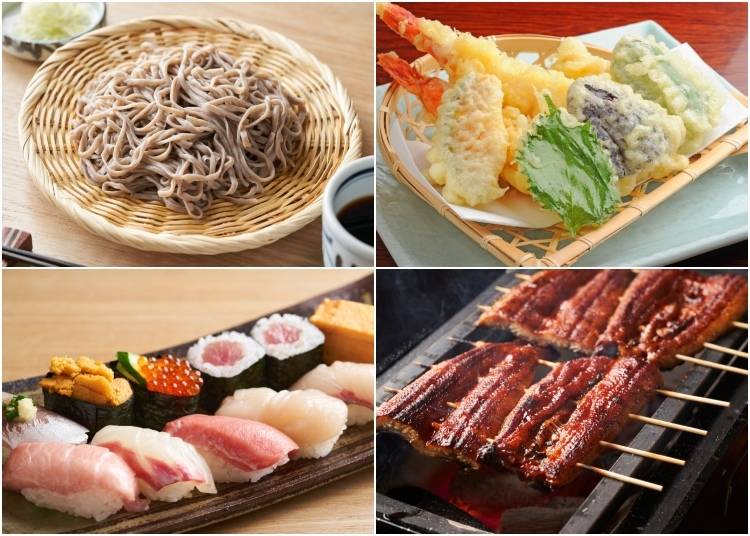
Things began to change around 1600 after Tokugawa Ieyasu unified the land after defeating his rivals in battle and moved the power center of the land from Kyoto to Edo, what had formerly been just a tiny fishing village on the shores of Edo Bay.
To turn little Edo into a city befitting the most powerful man in the land, Ieyasu put the samurai under the command of both his allies and defeated foes to work building Edo Castle, digging moats and canals, a water supply system, bridges, and more. Commoners from throughout the country were also hired to build the city.
The result was the creation of a melting pot of people and of foods, both styles of preparation and ingredients. Almost overnight, the city’s inhabitants—as well as visitors—had opportunities to sample new foods.
Eventually, four foods came to be closely identified with the city, the aforementioned Four Foods of Edo. Of these, two, sushi and tempura, utilized fish and other seafood from Edo Bay (before WWII, almost all tempura was made using seafood).
Unagi, the freshwater eel that is born in the South Pacific, could be found just outside the city in the small rivers and streams that made the area an enormous swampland.
Kabayaki unagi, the most popular way of serving unagi in Tokyo today, takes its name “kaba” from resembling the cattails that grew where the eels were caught (kaba, or gama, means cattail).
Soba, which could be found in abundance throughout Edo, was fast food to feed working men. The strong, salty tsuyu dipping sauce was also a critical means of ingesting salt during hot summer days.
Why did these four foods become so closely associated with Edo and later Tokyo? Probably because they were cheap and readily available. And in they were all fast foods of the day. Also, they are all delicious, which is why their popularity survives today.
Tokyo today
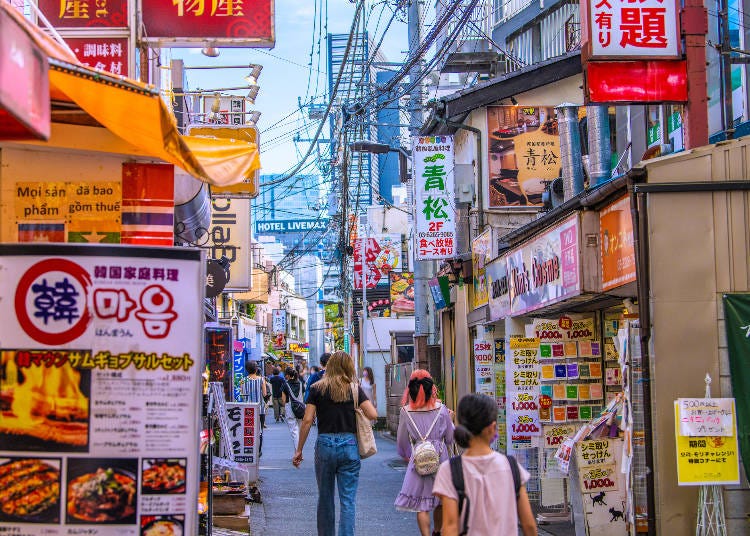
These days there is more to Tokyo food than the Big Four of yore. Tokyo is home to many outstanding bread shops and pizzerias. Wagyu (Japanese marbled beef) restaurants abound, serving both Western-style steaks as well as Japanese shabu-shabu and sukiyaki. And don’t forget about ramen!
All styles of ramen can be found in Tokyo, from Hokkaido miso ramen to Hakkata tonkatsu ramen, plus other ramen made with chicken or fish stock. Other major cities in Japan can boast equal selections of what Tokyo has to offer. But no place else has an enormous number of such places.
When Japan opened its borders to the world after the Meiji Restoration, it wasn’t just foreign people that came, but foreign foods and cuisines as well. Plus, many Japanese traveled the world and brought back new dishes.
The result is that today Japan, and especially Tokyo, is considered by many people to be the best place in the world to eat. Not just Japanese food but excellent French, Italian, Korean, Chinese, and other cuisines as well.
Food-themed neighborhoods in Tokyo
Way back in 1825, the French epicure and gastronome Jean Anthelme Brillat-Savarin wrote in his book of essays on food Philosophy of Taste (Physiologie du gout) the famous line, “Dis-moi ce que tu manges, je te dirai ce qui tu es” or, in English, "Tell me what you eat and I will tell you who you are," a saying sometimes shortened to just, “You are what you eat.”
Changing just a couple of Brillat-Savarin’s words results in a very apt description for dining in many parts of Tokyo: “Tell me where you are, and I will tell you what you eat.”
What follows is an overview of Tokyo neighborhoods most closely identified with particular foods.
1. Ginza
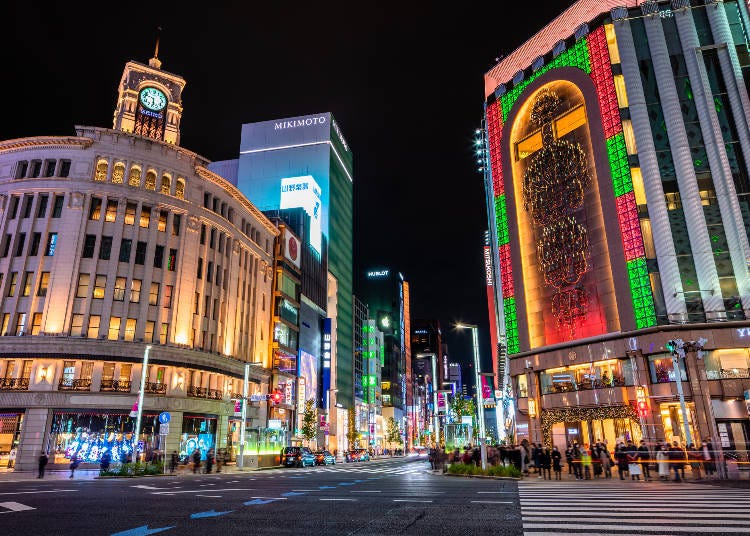
The Ginza neighborhood in central Tokyo is known worldwide for its stores and shopping, especially for luxury brands. But Ginza is also home to some of the most expensive restaurants in Japan and over 1,000 sushi restaurants (when neighboring Tsukiji is included).
There are around forty-five restaurants with Michelin stars, plus more with Michelin Bib Gourmand awards. Many of these restaurants are located on the upper floors of buildings and are not easy to notice or find. But many street-level restaurants also serve more affordable foods, including noodles (soba, udon, and ramen), cafes, and even a Kit-Kat store.
Ginza is also famous for its many hostess bars, where male customers pay to chat and drink with women hostesses (host bars, where women customers chat and drink with men, can be found in the Kabukichō area near Shinjuku Station).
- Ginza Station (Tokyo Metro Ginza, Hibiya, and Marunouchi lines)
- Higashi Ginza Station (Tokyo Metro Hibiya Line; Toei Asakusa Line)
- Ginza Itchome Station (Tokyo Metro Yurakucho Line)
- Hibiya Station (Tokyo Metro Hibiya and Chiyoda lines; Toei Mita Line)
- Yurakucho Station (JR Yamanote; JR Keihin Tohoku)
- Sushi, soba, udon, cafes, fine dining
-
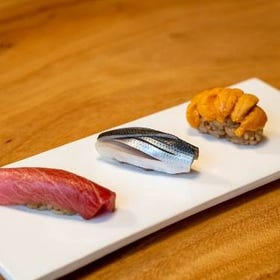 Ginza Sushi Ojima (High-End Sushi Restaurant)
Ginza Sushi Ojima (High-End Sushi Restaurant)
Photo: KKday -
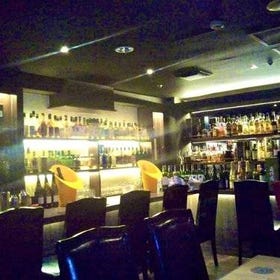 Sowaka Bar (Private dinner)
Sowaka Bar (Private dinner)
Photo: Viator -
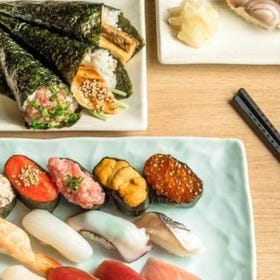 Hinasushi Tokyo (Unlimited Sushi Buffet)
Hinasushi Tokyo (Unlimited Sushi Buffet)
Photo: KKday -
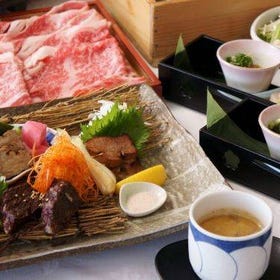 Miyashita (Wagyu Sukiyaki and Teppanyaki)
Miyashita (Wagyu Sukiyaki and Teppanyaki)
Photo: Klook -
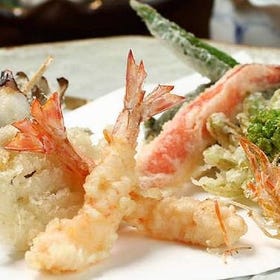 Ginza Tempura Abe (Famous Tempura Specialty Restaurant)
Ginza Tempura Abe (Famous Tempura Specialty Restaurant)
Photo: Klook -
 Sagaya Ginza (Deluxe Wagyu BBQ)
Sagaya Ginza (Deluxe Wagyu BBQ)
Photo: Klook
2. Nihonbashi

During the Edo period, Nihonbashi, including sub-neighborhoods such as Ningyōchō, was the center of the townspeople’s culture. It was where the city’s main fish market was from early in the 17th century until 1923. It was where the kabuki theaters were located for much of the Edo period and where the first department stores developed. It is also where many of today’s popular foods were first made and served.
There are still many sushi restaurants in the neighborhood, as well as many restaurants that opened for business back in the Edo period, including quite a few places that were the first to serve dishes that are common today.
Among these are the 265 or so-year-old Tamahide, where oyakodon (a dish of chicken and eggs simmered in sweet miso and served over rice—the name means “parent and child” donburi) and Itakuraya, the shop in Ningyōchō that gave the name ningyoyaki to the bite-size cakes filled with sweet bean paste that can these days be found throughout Japan.
Nihonbashi is also where the original Benihana is located, a restaurant that pre-dates WWII, although originally as a jazz café, not a teppanyaki place.
The main Nihonbashi area, the neighborhood surrounding Nihonbashi Station, has been dominated for over 300 years by what is now the Mitsui Corporation and Mitsukoshi, its flagship department store.
When you visit, be sure to check out the basement “depachika,” an entire floor of food, both ready to eat as well as to take home to cook. As a comparison, walk a couple of blocks south and go into Takashimaya’s basement food area for a look around—or to shop.
In recent years Mitsui’s commercial real estate division has been building and expanding its COREDO development—the name is an acronym for Core of Edo—a collection of retail, residential, office, and restaurant spaces, mostly in front of the Mitsukoshi department store.
There are several shops selling katsuobushi and other dashi ingredients that are over 250 years old, and perhaps try a small cup of dashi as an alternative to tea or coffee (the katsuobushi dealers did not relocate to Tsukiji after the Great Earthquake of 1923 as they were not actually part of the old fish market, so they remain).
There are also several prefectural antenna shops around Nihonbashi, including shops from Nara, Shiga, Toyama, and Fukushima. Antenna shops are stores that sell goods from the prefecture the store represents, everything from specialty foods to beer and sake to tableware and other crafts. Visiting these shops is a great way to get a sense of what sort of things a prefecture is famous for without having to actually make the trip. It is also a great way for prefectures to entice people to visit.
- Nihombashi Station (Tokyo Metro Ginza Line; Toei Asakusa Line)
- Ningyocho Station (Tokyo Metro Hibiya Line)
- Depachika; oyakodon; antenna shops; teppanyaki; ningyoyaki
3. Asakusa

As with the Nihonbashi area, Asakusa still has the charms of old Edo and early 20th-century Tokyo. The main attraction of Asakusa for over one thousand years has been Sensōji, the biggest and oldest Buddhist temple in Tokyo.
In the past, people traveled on foot from all over Japan to make pilgrimages to the temple. But saying prayers to Kannon, the Buddhist Goddess of Mercy, wasn’t the only thing people wanted to do.
They also wanted to eat and find entertainment. Although people rarely travel to Asakusa on foot these days, they still seek food, entertainment, and souvenirs, just as in the past.
The result is a collection of restaurants serving food Japanese people don’t usually eat every day, things like sushi, fugu (puffer fish), unagi (eel), okonomiyaki (a pancake filled with whatever you like topped with sweet sauce and katsuobushi shavings that “dance” in front of you) and monjayaki, yōshoku (western dishes prepared Japanese style), and even dojō (loach), as well as more common foods such as soba, udon and ramen and yakitori.
Numerous shops also sell all kinds of senbei (rice crackers), ningyō-yaki (bite-size cakes filled with sweet bean paste), and other assorted snacks, especially along the Nakamise, the shopping street that leads to Sensōji Temple. But remember, the locals frown upon eating while walking, and they are not shy about warning people not to do so!
There is more to Asakusa than the area in front of and to the west of the temple. Asakusa San-Chōme, the blocks to the north of the temple, is home to many ryōtei (high-end places serving kaiseki meals, with geisha if desired), sushi shops, and geisha. If you visit in the early evening, chances are you will see geisha on their way to meet and entertain customers at one of the many restaurants where they work.
- Asakusa Station (Tokyo Metro Ginza Line; Toei Asakusa Line; Tsukuba Express)
- Eel, sushi, fugu, okonomiyaki, monyajaki, yoshoku, soba, udon, yakitori, kaiseki, senbei
4. Kagurazaka
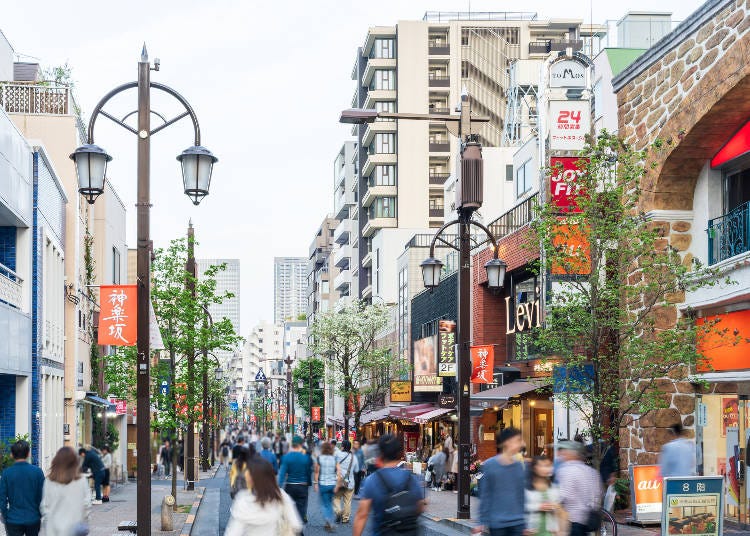
Kagurazaka, a neighborhood located up the hill from Iidabashi Station, may be best known for its numerous French restaurants and bistros, thus earning it the nickname of Tokyo’s “Little Paris.”
While a few of the restaurants require reservations, often months in advance, most places are much more casual and welcoming to walk-in customers.
Besides French cuisine, Kagurazaka is also home to traditional Japanese cuisine, as well as geisha. There is high-end dining, including Michelin-starred sushi and three-star kaiseki.
But there are also lots of very good soba shops, an excellent chankō-nabe (sumo hotpot) place, and numerous shops serving all kinds of foods, snacks, and knickknacks.
The neighborhood is centered around the main street going up the hill from Iidabashi Station towards Waseda, but most of the best restaurants are off to the sides on narrow streets winding their way along the hillside.
- Kagurazaka Station (Tokyo Metro Tozai Line)
- French cuisine; kaiseki; soba; fine dining
5. Tsukishima
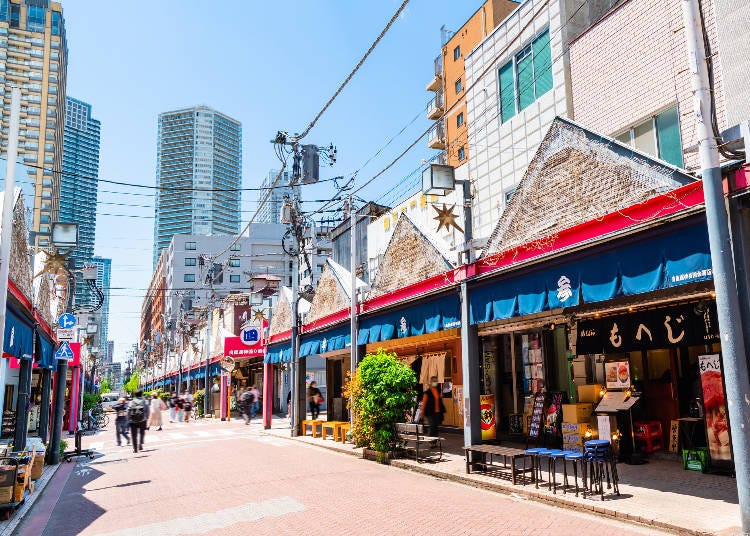
If one were to ask a resident of Tokyo what neighborhood’s identity is most closely linked to a particular food, I am pretty sure most people would say Tsukishima and monjayaki.
Tsukishima is an area across the Sumida River from Tsukiji that still has primarily old wooden two-story buildings, although in recent years some high-rise apartment buildings have gone up. It is built on land reclaimed from Tokyo hundreds of years ago.
Its real claim to fame is Tsukishima Monja Street, a stretch of road 400 meters long or so lined by small shops, most of which are restaurants specializing in monjayaki; there are at present around fifty-eight along the main street, plus more on side streets.
Monjayaki is Tokyo’s answer to the okonomiyaki associated with Osaka and Hiroshima. The dish is a batter of flour and water or dashi with vegetables and your choice of solid ingredients, usually including various seafood products, cheese, or pork.
The batter is thinner and runnier than okonomiyaki batter, making monja much thinner than okonomiyaki pancakes. The ingredients are first poured onto a hot griddle (teppan) that is part of your dining table, then moved around the griddle using small spatulas that you also use to eat with (images of spatulas, often showing two that are crossed like swords, are the symbol of the street).
If a customer is unfamiliar with cooking monja, the staff will show you how. It’s the perfect dish for people who like to play with their food! Also, because they are so similar in ingredients and preparation, most of the restaurants on Tsukishima Monjayaki Street also serve okonomiyaki.
Because monja is cheap and fun food to eat in groups, it is very popular among young people, especially university students. That is likely why many of the non-monja shops on the street sell other things popular with younger folks, such as melon pan (melon bread), various cakes and other sweets, and ice cream.
If you desire to prepare your own meal while in Japan, monjayaki is ideal. Why not head over to Tsukishima, pick a restaurant (there isn’t much to differentiate one place from another), and have some monja? And while you are there, try some okonomiyaki as well.
- Tsukishima Station (Toei Oedo Line; Tokyo Metro Yurakucho Line)
- Monjayaki; okonomiyaki; melon pan
6. Ryogoku
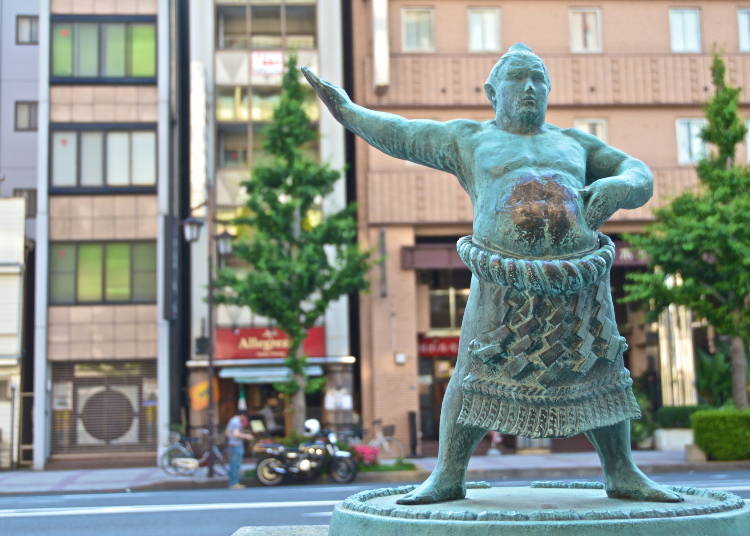
Just across the Sumida River from Higashi-Nihonbashi (East Nihonbashi) is Ryogoku, a neighborhood that is home to many cultural attractions, the most famous being sumo, sumo wrestlers that live there, and the Kokugikan, the arena where sumo tournaments are held three times a year.
There are also many museums, including the Edo-Tokyo Museum, the Japanese Sword Museum, one dedicated to the ukiyo-e artist Hokusai, a sumo museum, and even a fireworks museum.
And of course, there are many restaurants serving all kinds of food, with one, in particular, standing out: Chanko nabe (nah-bay) restaurants. Chanko nabe is the hot pot dish that sumo wrestlers eat every day.
Ryōgoku is home to some twenty-five or thirty chanko restaurants, including the first one, Chanko Kawasaki; just look for signs saying, in Japanese, ちゃんこ. It seems only natural for there to be so many chanko places as the area is the home of sumo, Japan’s national sport. And what could be a better second career for a retired sumo wrestler than doing what, after sumo, they know best, food (younger wrestlers do all of the cooking, with some individuals doing more of the cooking than others)?
Aside from chanko, there is also a Mongolian cuisine restaurant owned by a retired wrestler from Mongolia that mostly serves lamb or mutton as the main meat. There are several very good soba restaurants, including one with one Michelin star. And lots of steak and yaki-niku places as well.
Surprisingly, despite the neighborhood being where the very first sushi restaurant was, there are not many sushi places (the original sushi shop has been gone for over 100 years; all that remains is a sign marking its location).
Whether or not sumo is happening, it is always fun to visit Ryogoku, and a good place to eat, especially the neighborhood’s signature cuisine, chanko nabe.
If a sumo tournament is taking place (they are in January, May, and September), you will most likely be able to see sumo wrestlers as they come and go under the brightly colored banners that fly in front of the arena.
But even when there is no tournament, you will have a good chance of encountering one of these men, or at least getting a whiff of the strongly scented camellia oil they use to set their hair.
- Ryogoku Station (Toei Oedo Line; JR Chuo-Sobu Line)
- Chanko-nabe; steak; yaki-niku
7. Monzen-nakacho

Located a bit northwest of Tsukishima, Monzen-nakachō is a small neighborhood centered around Naritasan Fukagawa Fudodo, a famous Buddhist temple and Tomioka Hachimangu, a Shintō shrine home to the Fukagawa Hachiman Festival (Water Throwing Festival), one of the biggest “matsuri” (festivals) in Tokyo.
It is also home to hundreds of small restaurants and bars serving all sorts of mostly Japanese food, almost always at very reasonable prices.
While there are quite a few places to eat and drink in the area to the west of the temple—including one quaint small street paved with bricks lined with nothing but very small places (think six people maximum!).
Across the main road in front of the temple and shrine is where most of the action is; two streets, each about 500 meters long, with hundreds of two-story businesses, the vast majority being izakaya, bars, or other places to eat and drink.
Monaka, as the area is commonly referred to by Japanese people familiar with the neighborhood, is not on many tourist guides of places to visit. But if you want to experience a night out the way a typical Japanese person might, this is a fantastic place to visit.
- Monzen-nakacho Station (Toei Oedo Line; Tokyo Metro Tozai Line)
- Great for small bars and restaurants with a local feel
8. Harajuku
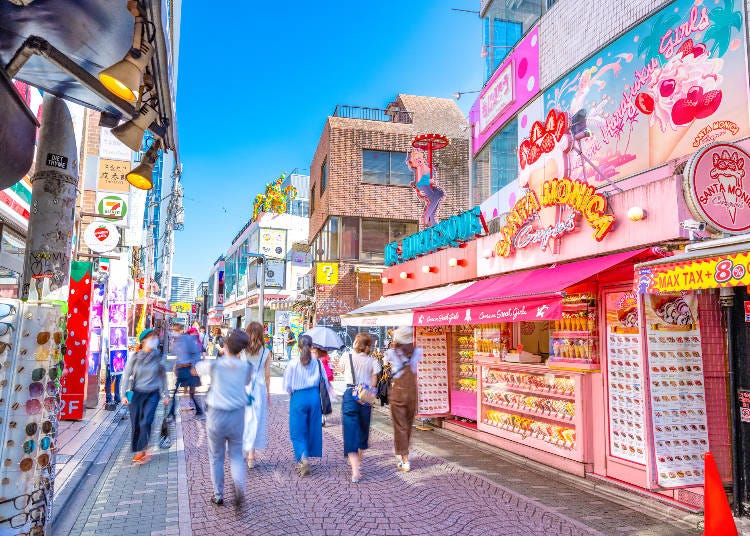
Harajuku has long been associated with youth culture, especially fashion and sweet and trendy foods such as colorful crepes and “gourmet” popcorn.
And because of its distinctive food culture, the neighborhood deserves inclusion in this article. But when I went over to have a fresh look around, what I noticed was how much things have changed, probably because of the pandemic.
Gone were the ubiquitous crepe shops. Gone were the fad foods like exotic popcorn that I remembered. The clothing shops are still there, maybe even more than before. Some ice cream shops still exist, including one selling truffle ice cream.
What seems to have partially replaced the former youth-oriented food stands and restaurants are izakaya and craft beer bars. It’s almost like Harajuku became an adult!
Several years ago, I wrote an article for a local magazine on Harajuku restaurants that served Japanese food. I spent a whole day walking the streets of Harajuku and struggled to come up with two or three restaurants worth featuring. That would definitely no longer be the case.
- Harajuku Station (JR Yamanote Line)
- Meiji-jingumae ‘Harajuku’ Station (Tokyo Metro Chiyoda and Fukutoshin lines)
- Fad foods; craft beer
Bonus: Cheap Izakaya - A Must-Try in Tokyo
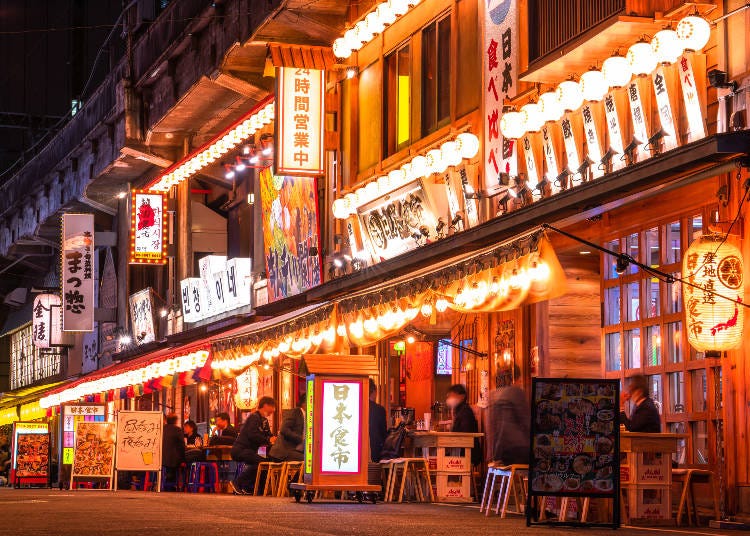
There are several Tokyo neighborhoods where you can find many a generally inexpensive izakaya (Japanese pubs) and tachinomiya (stand-and-eat and drink restaurants) clustered around train stations.
The most well-known of these are near the train stations of Yurakucho, Shinbashi, Ikebukuro, Shibuya, and Shinjuku, with Ueno and Asakusabashi not far behind in the number of choices.
The concentration of izakaya near the stations is due to previous regulations that forced commuter rail lines coming into Tokyo from suburban areas to stop service when the lines met the Yamanote train line that loops around the city. This offered salaryman commuters to stop for a quick drink and snack after work before continuing for another hour or more before reaching their home station.
The stations listed above are some of the busiest in Tokyo, filled every workday with up to one million people passing through; Shinjuku Station holds the world record for the highest average number of people passing through daily, 3.59 million, set in 2018! And as long as there are potential customers, there will be restaurants and pubs to slake their appetites and thirst.
If you are in the mood for a quick and cheap snack and drink and are curious about the life of Japan’s famous salarymen (and increasingly, women too), head to one of these stations and go outside and look around for a place to observe the life of a salaryman after work.
Wrapping up
Tokyo's culinary scene has a rich and diverse history, shaped by its unique geography and political changes. From its humble beginnings as a small fishing village, Tokyo has transformed into a global food capital with a reputation for offering some of the best cuisine in the world.
While the Big Four of Edo remain popular to this day, Tokyo now offers a wide variety of food options, from traditional Japanese dishes to international cuisines. With its constant evolution and innovation, Tokyo's food scene is sure to continue delighting food enthusiasts for years to come.
Written by:

Recommended Tokyo food tours
- Area
- Category
*Prices and options mentioned are subject to change.
*Unless stated otherwise, all prices include tax.
Limited time offer: 10% discount coupons available now!
Recommended places for you
-

12 Unique & Fun Tokyo Food Tours to Enjoy in 2024
-

15 Must-Try Restaurants in Ikebukuro: From Aged Yakiniku to All-You-Can-Eat Sushi, Plus Adorable Animal Cafés
-

Step Into the Story: Inside Immersive Fort Tokyo
-

Best Things to Do in Tokyo in April 2024: Events, Festivals & More
-

The Complete Guide to the Kintetsu Rail Pass
-

A Complete Guide to the JR West Kansai Area Pass
-
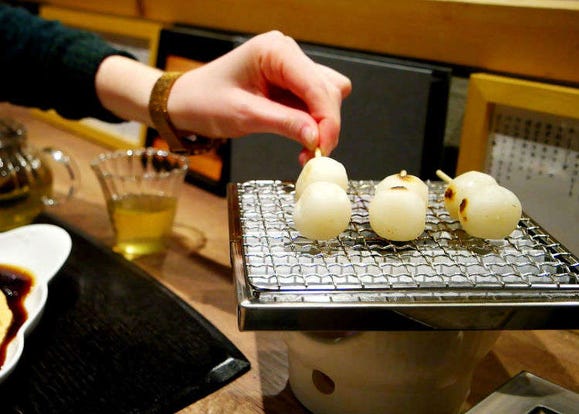
[MOVIE] Experience the Tokyo Dessert Heaven with Grilled Sweet Dumplings and Water Cake at Mikan Club!
-
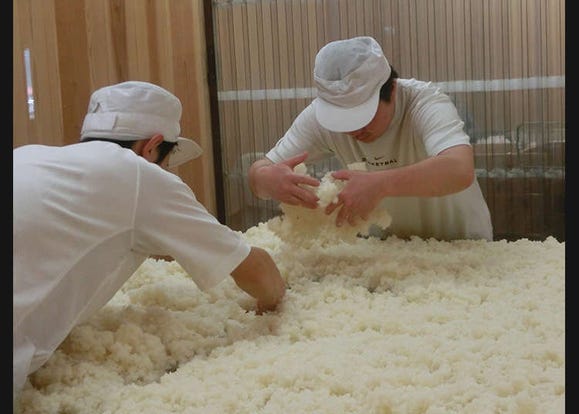
Learn the Craft of Japanese Sake Production in a Tokyo Brewery
-
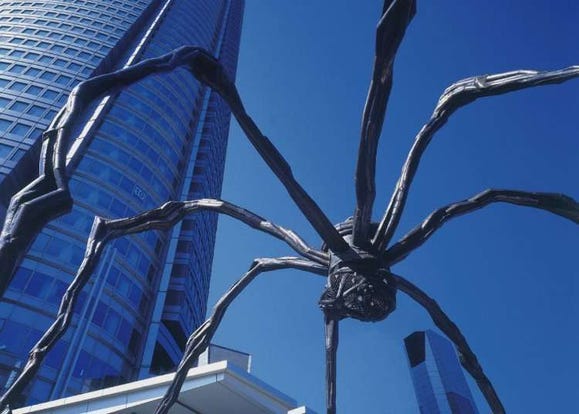
Tokyo Roppongi: 5 Most Amazing Spots at Roppongi Hills and How to Make the Best of Them!
-
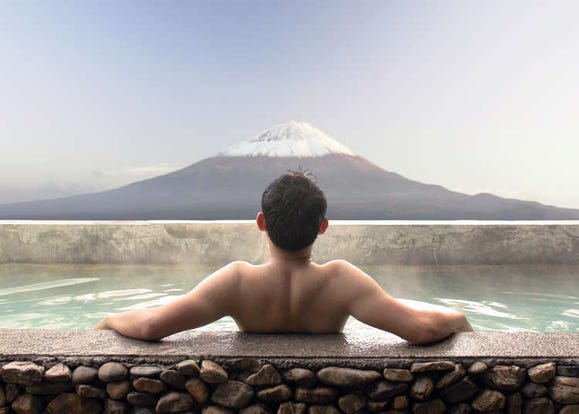
Japan's Bath Culture: Tips You Should Know!
-
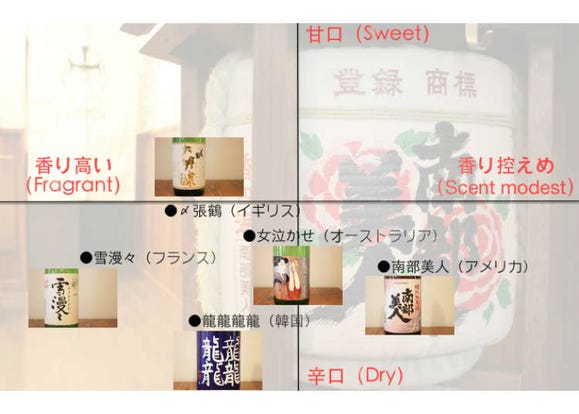
Nihonshu Bar Fuksuke – No Matter where you are from, this Japanese Sake Connoisseur has the Right Drink for You!
-
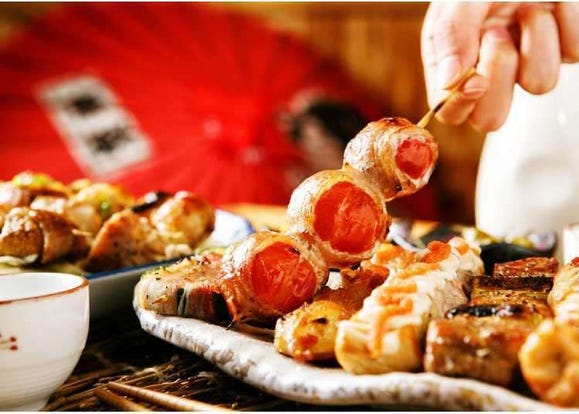
Going Beyond Sushi: What foods to try at an Izakaya – Japanese style pub?
- #best ramen tokyo
- #what to buy in ameyoko
- #what to bring to japan
- #new years in tokyo
- #best izakaya shinjuku
- #things to do tokyo
- #japanese nail trends
- #what to do in odaiba
- #onsen tattoo friendly tokyo
- #daiso
- #best sushi ginza
- #japanese convenience store snacks
- #best yakiniku shibuya
- #japanese fashion culture
- #best japanese soft drinks














